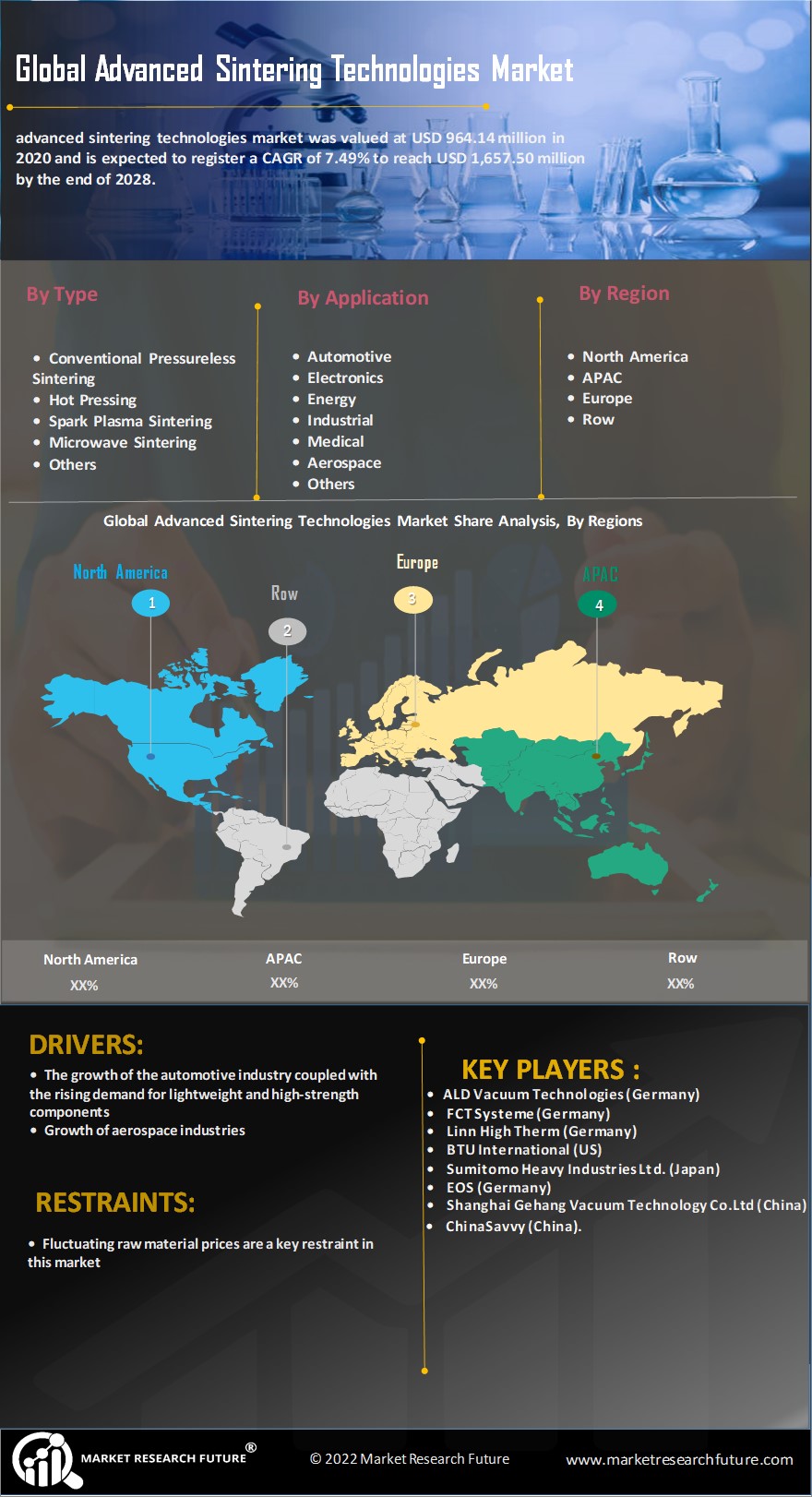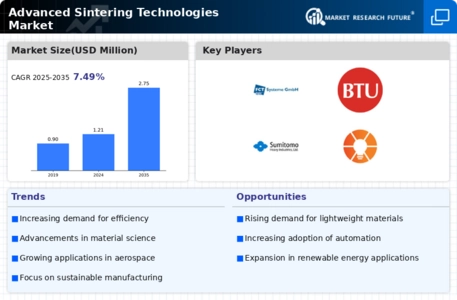Market Growth Projections
The Global Advanced Sintering Technologies Market Industry is projected to experience substantial growth over the next decade. With a market value of 1.21 USD Billion in 2024, it is anticipated to reach 2.75 USD Billion by 2035, reflecting a robust CAGR of 7.76% from 2025 to 2035. This growth trajectory indicates a strong demand for advanced sintering technologies across various industries, driven by technological advancements, increasing applications, and a focus on sustainability. The market's expansion is likely to be supported by ongoing research and development efforts aimed at enhancing sintering processes and materials.
Expansion of the Automotive Sector
The expansion of the automotive sector is a crucial driver for the Global Advanced Sintering Technologies Market Industry. With the automotive industry increasingly focusing on the development of electric vehicles and lightweight components, advanced sintering technologies are becoming essential for producing high-performance parts. These technologies facilitate the creation of complex shapes and structures that are vital for modern vehicle design. As the automotive sector continues to evolve, the demand for advanced sintering solutions is expected to rise, further propelling market growth and innovation.
Increasing Applications in Electronics
The Global Advanced Sintering Technologies Market Industry is witnessing an increase in applications within the electronics sector. Sintering technologies are utilized to produce high-performance components such as capacitors, resistors, and inductors, which are essential for modern electronic devices. The demand for miniaturization and enhanced performance in electronics drives the need for advanced sintering methods that can produce intricate designs with high precision. As the electronics market continues to expand, the sintering technologies sector is expected to benefit significantly, contributing to the anticipated market growth to 2.75 USD Billion by 2035.
Growing Demand for Lightweight Materials
The Global Advanced Sintering Technologies Market Industry experiences a growing demand for lightweight materials across various sectors, including automotive and aerospace. Manufacturers are increasingly adopting sintering technologies to produce components that are not only lighter but also exhibit enhanced strength and durability. For instance, the use of advanced sintering techniques allows for the creation of complex geometries that traditional manufacturing methods struggle to achieve. This trend is expected to contribute significantly to the market, with projections indicating a market value of 1.21 USD Billion in 2024, reflecting the industry's shift towards innovative material solutions.
Rising Focus on Sustainable Manufacturing
A rising focus on sustainable manufacturing practices is influencing the Global Advanced Sintering Technologies Market Industry. Companies are increasingly prioritizing eco-friendly production methods that minimize waste and reduce energy consumption. Advanced sintering technologies align with these sustainability goals by enabling the recycling of materials and reducing the carbon footprint associated with traditional manufacturing processes. This shift towards sustainability is not only beneficial for the environment but also enhances the competitiveness of companies in the market. As a result, the industry is likely to see continued growth as more manufacturers adopt these practices.
Technological Advancements in Sintering Processes
Technological advancements in sintering processes are pivotal drivers within the Global Advanced Sintering Technologies Market Industry. Innovations such as spark plasma sintering and microwave sintering are enhancing the efficiency and effectiveness of material processing. These methods allow for reduced energy consumption and shorter processing times, which are critical in meeting the demands of modern manufacturing. As industries seek to optimize production, the adoption of these advanced techniques is likely to accelerate. The market is projected to grow at a CAGR of 7.76% from 2025 to 2035, indicating a robust future for these technologies.





